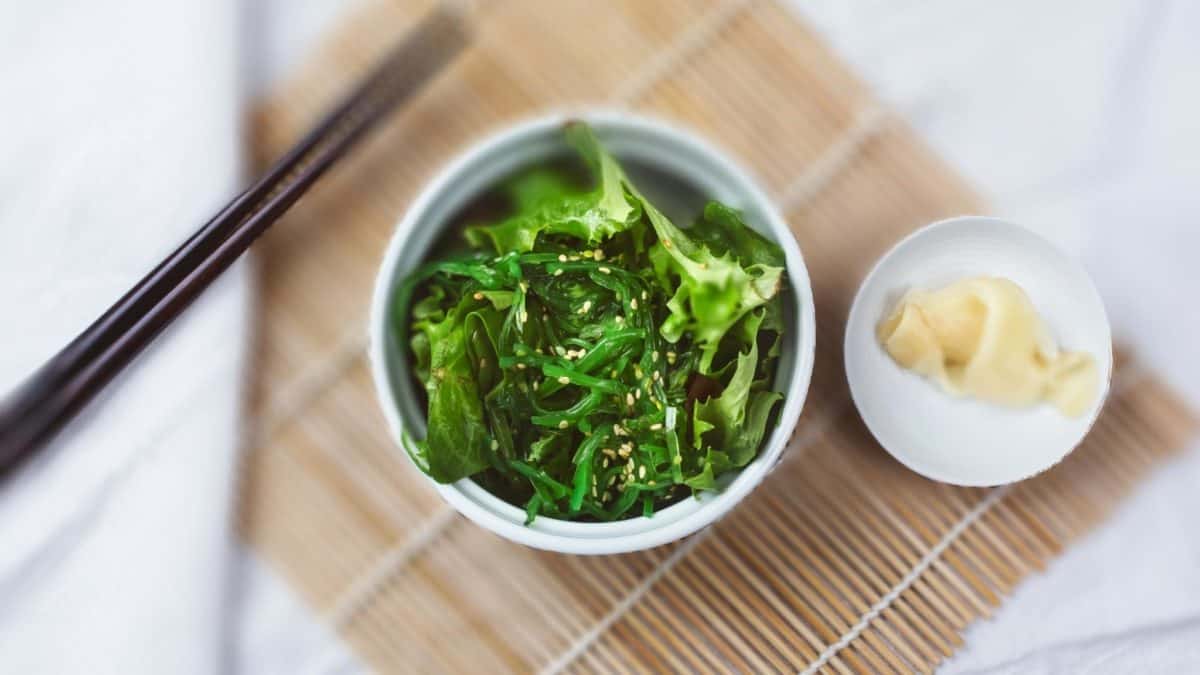Wakame: How To Use This Seaweed In Your Dishes
Wakame is a type of edible seaweed that is popular in many Asian cuisines. It has a mild, slightly sweet flavor and firm texture. Wakame is often used in soups, salads, and other dishes.


Check out our new cookbook
Bitemybun's family recipes with complete meal planner and recipe guide.
Try it out for free with Kindle Unlimited:
Read for freeIn this post we'll cover:
What does “wakame” mean?
The word “wakame” is derived from the Japanese word “waka,” which means “young” or “fresh.” The seaweed is also known as “sea mustard” or “Undaria pinnatifida.”
Where does wakame come from?
Wakame is native to the coasts of Japan, Korea, and China. It has been cultivated in those countries for centuries. Wakame is now also grown in New Zealand, Australia, Canada, and the United States.
How is wakame harvested?
Wakame is usually harvested by hand. The seaweed is cut from the rocks or seabed and then dried in the sun.
How do you prepare wakame?
Wakame can be rehydrated by soaking it in water for 10 minutes. It can then be added to soups, salads, and other dishes. Wakame is also available in dried, powdered, or paste form.
What does wakame taste like?
Wakame has a mild, slightly sweet flavor with a firm texture.
What’s the difference between wakame and hijiki?
Hijiki is another type of edible seaweed that is popular in Japan. It has a strong, salty flavor and a chewy texture. Wakame and hijiki are sometimes used interchangeably in recipes.
What’s the difference between wakame and miyeok?
Miyeok is the Korean name for the same type of edible seaweed as wakame in Japanese or Sea Mustard in English. It has a mild, slightly sweet flavor and a tender texture.
Types of wakame products
- Dried wakame: Wakame that has been sundried and packaged so it’s easy to rehydrate and use.
- Wakame flakes: Wakame that has been dried and then flaked. It can be used as a seasoning for soups, salads, and other dishes.
- Wakame powder: Wakame that has been dried and then ground into a powder. It can be used as a seasoning or thickener.
- Wakame paste: Wakame that has been cooked and then ground into a paste.
Is wakame healthy?
Wakame is a rich source of vitamins and minerals, including calcium, iron, magnesium, phosphorus, potassium, sodium, and zinc. It also contains protein, fiber, and antioxidants. Wakame has been linked to several health benefits, including improved heart health, reduced inflammation, and better blood sugar control.
What are the health benefits of wakame?
Wakame is a good source of vitamins and minerals, including iodine, calcium, iron, and magnesium. It also contains fiber, protein, and antioxidants. Some research suggests that wakame may help lower blood pressure and cholesterol levels. It may also have anti-inflammatory and anticancer properties.
What is the nutritional value of wakame?
One cup (100 grams) of rehydrated wakame seaweed contains:
Calories: 35
Protein: 2 grams
Carbs: 7 grams
Fiber: 3 grams
Fat: 0 grams
Vitamin C: 10% of the Daily Value (DV)
Vitamin B6: 8% of the DV
Folate: 7% of the DV
Iron: 6% of the DV
Magnesium: 5% of the DV
Potassium: 4% of the DV
Conclusion
Wakame is a very healthy and versatile sea vegetable that can be used in so many Japanese (or other) dishes. It has a unique chewy texture that especially works well in soups, like my favrote, miso soup.
Also read: wakame vs kelp vs kombu
Check out our new cookbook
Bitemybun's family recipes with complete meal planner and recipe guide.
Try it out for free with Kindle Unlimited:
Read for freeJoost Nusselder, the founder of Bite My Bun is a content marketer, dad and loves trying out new food with Japanese food at the heart of his passion, and together with his team he's been creating in-depth blog articles since 2016 to help loyal readers with recipes and cooking tips.
